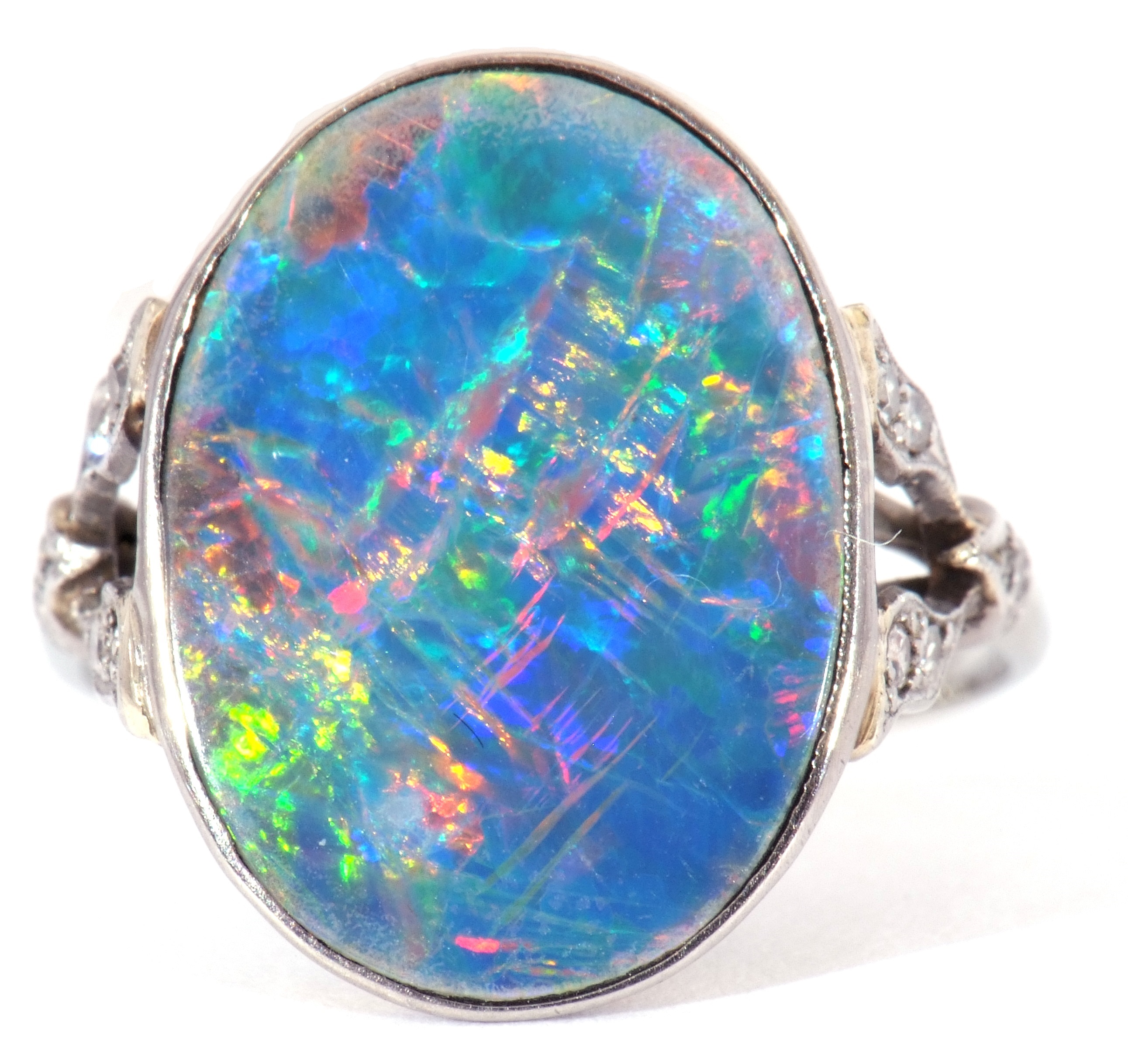

06/10/2023 General News
This month is an appropriate one to take a look at a gemstone which is increasingly being seen adorning celebs at gala premieres, writes Angela Marshall. Worn by stars from Helen Mirren to Taylor Swift, opals are certainly in the spotlight – and they are also the birthstone for October, so anyone celebrating their birthday this month has an added reason to read on.
Opal has a particular appeal, which is down to its structure and the way it reflects light. The stone is the result of seasonal rains which fall in very dry regions (such as the Australian outback). The water soaks through the parched ground and into ancient underground rock, taking with it dissolved silica (a compound of silicon and oxygen).
As the water evaporates during dry periods, solid deposits of silica are left in cracks in the rock, and these deposits are opal.
This formation results in a distinctive structure to the stone. If you view opal through a powerful microscope, you see that it is made up of tiny spheres stacked in a grid-like pattern. As light travels between the spheres, it diffracts, breaking up into the colours of the rainbow, called spectral colours.
It is this diffraction which gives opal its characteristic play of colour, giving each stone a unique appearance. Incidentally, this play of colour only occurs in precious opals, and not in what are known as common opals – and that is an important point to take into account when assessing the desirability of jewellery made with the stone.
Because they can give out almost any colour, opals have been valued throughout history. The Romans considered the stone the most precious of all; Bedouins believed that they contained lightning and fell from the sky during thunderstorms; ancient Greeks believed opals gave their owners the gift of prophecy and guarded them from disease.
In Europe, opals have always been considered as a symbol of hope, purity and truth. This is despite a supposed superstition that it is unlucky for anyone not born in October to wear the stone. This particular belief is not ancient, but as a result of the 1829 novel Anne of Geierstein by Sir Walter Scott, in which the protagonist wears an opal hairpiece which fades to black when it is touched by holy water.
Despite this fiction-inspired blip, opals have generally been regarded as the luckiest and most magical of all gems – it was even once thought to have the power to preserve the life and colour of blond hair!
In the 1890s, Australian mines started producing opals commercially, and most of the stones you see today have an antipodean origin.
Because of their amazing ability to diffract light, opals have never really gone out of fashion. They have been used in jewellery for centuries, and remain hugely popular today. They are often set in pieces with diamonds, offering a colourful foil to the diamonds purity.
In the saleroom opal jewellery sells well, whether antique and vintage pieces or more modern examples. And judging by its continued adoption by A-listers on the red carpet, its popularity seems destined to continue for the foreseeable future.